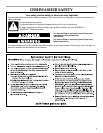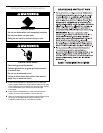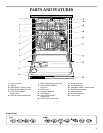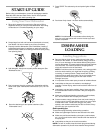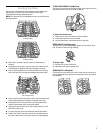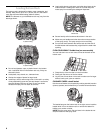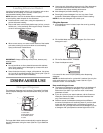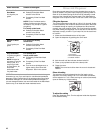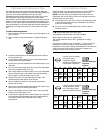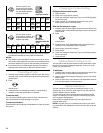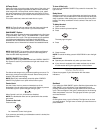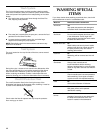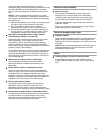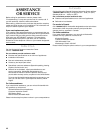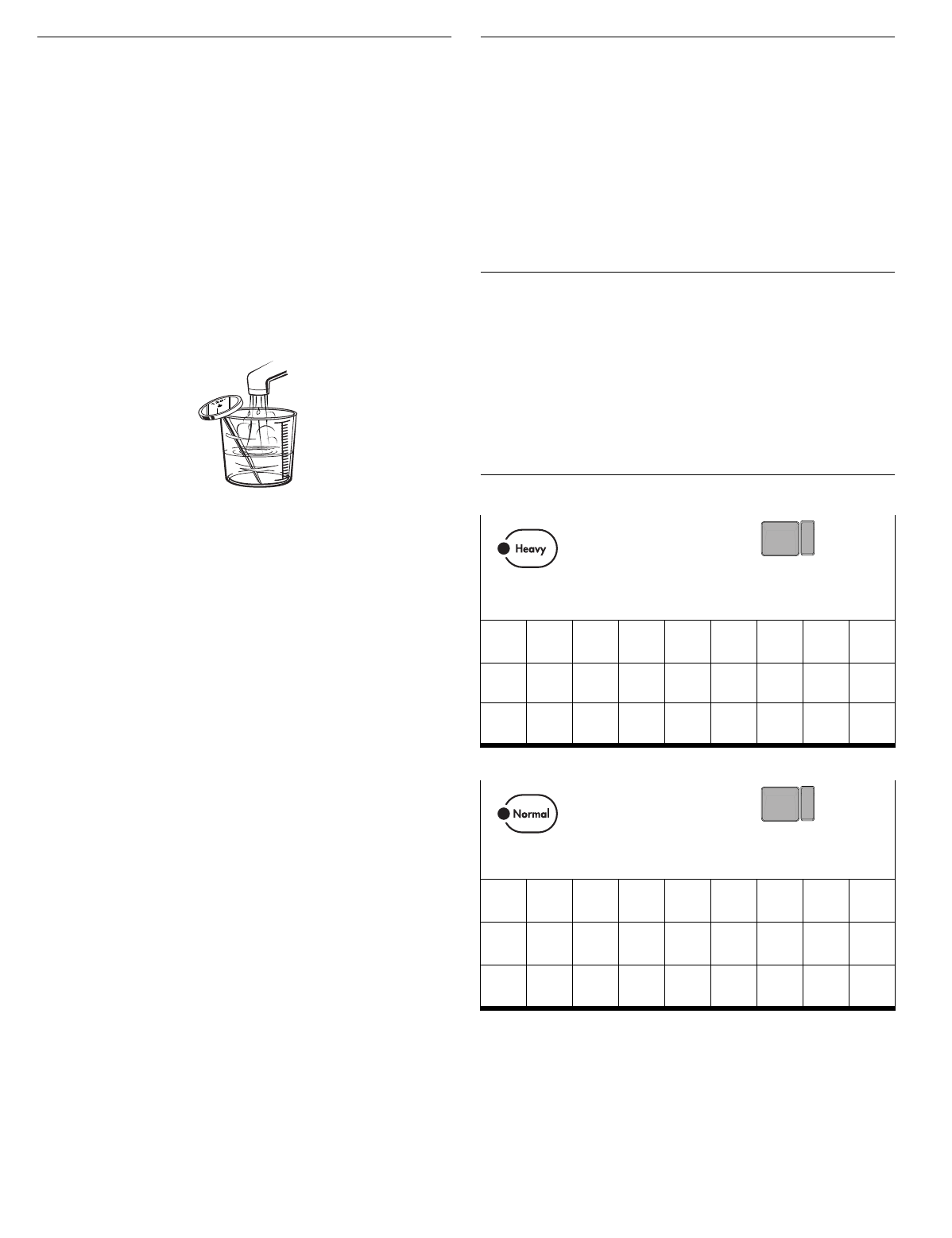
11
Dishwasher Performance Tips
Hot water dissolves and activates the dishwashing detergent.
Hot water also dissolves grease on dishes and helps glasses dry
spot-free. Is the water temperature too low? For best
dishwashing results, water should be 120°F (49°C) as it enters
the dishwasher. Loads may not wash as well if the water
temperature is too low. Water that is too hot can make some soils
harder to remove and cause certain detergent ingredients not to
function. If your water heater is located far from the dishwasher, it
may be necessary to run the hot water at the faucet closest to the
dishwasher to minimize the amount of cold water in the water
line.
To check water temperature
1.
Run hot water at the faucet closest to your dishwasher for at
least 1 minute.
2.
Place a candy or meat thermometer in a glass measuring
cup.
3.
Check the temperature on the thermometer as the water is
running into the cup.
■
To save water, energy and time, do not rinse dishes before
putting them into the dishwasher.
■
Choose the cycle that describes the most difficult soil in your
dish load.
■
Do not worry about mixed loads. Any item that is dishwasher
safe can be washed using any cycle.
■
Use a delay feature (on some models) to run your dishwasher
during off-peak hours. Local utilities recommend avoiding
heavy usage of energy at certain times of day.
■
During the summer, run your dishwasher at night. This
reduces daytime heat buildup in the kitchen.
■
Use the heated dry option for best drying performance.
Always use rinse aid.
■
Use cycles or options that add extra heat to the wash or rinse
portion of the cycle for better performance.
■
Run your dishwasher with full loads. Run a rinse cycle after
meals until the dishwasher is full.
■
If your home is equipped with a water softener, you may want
to avoid starting the dishwasher during the regeneration of
the softener, as this may contribute to poor wash
performance.
Cycle Selection Charts
Select the wash cycle and options desired. Or press START to
repeat the same cycle and options as the previous cycle.
NOTE:
If the last cycle you completed was a rinse cycle, the
dishwasher will run the last full wash cycle and options that you
selected when you press Start.
■
If the power is off or the door is open for an extended period
of time, the Start button memory will default to the Normal
cycle with heated drying.
■
If you do not run the dishwasher daily, close the door to
maintain memory.
A “
●
” shows what steps are in each cycle.
Temperatures indicate where extra heat is added.
Water usage is shown in
U.S.
gallons/liters.
This model meets the E
NERGY
S
TAR
®
guidelines for energy
efficiency.
Cycle time includes dry time. An asterisk ( * ) by the cycle time
indicates the cycle time might be longer depending on the
temperature of the water entering the dishwasher. The cooler the
water, the longer the cycle time. If the water is already hot
enough, the cycle time will be as shown.
Use this cycle for heavily-
soiled pots, pans,
casseroles, regular
tableware, and harder than
normal water conditions.
Use both detergent
dispenser
sections.
Soil
Level
Sensed
Pre-
Wash
Main
Wash
Rinse Rinse Final
Heated
Rinse
Dry Time
(min)
Water
Usage
(gal/L)
Heavy
●
130°F
(54°C)
●
140°F
(60°C)
● ● ●
140°F
(60°C)
●
96* 8.8-
10.4/
33-39
Light
●
130°F
(54°C)
●
140°F
(60°C)
● ●
140°F
(60°C)
●
89* 6.9/26
Use this cycle for loads with
normal amounts of food
soil. (The energy-usage
label is based on this cycle.)
Use both detergent
dispenser
sections.
Soil
Level
Sensed
Pre-
Wash
Main
Wash
Rinse Rinse
or
Purge†
Final
Heated
Rinse
Dry Time
(min)
Water
Usage
(gal/L)
Heavy
● ●
140°F
(60°C)
● ● ●
140°F
(60°C)
●
94* 7.5-8.8/
28.3-
33.3
Light
● ●
120°F
(49°C)
● ●
140°F
(60°C)
●
79* 5.9/
22.3



